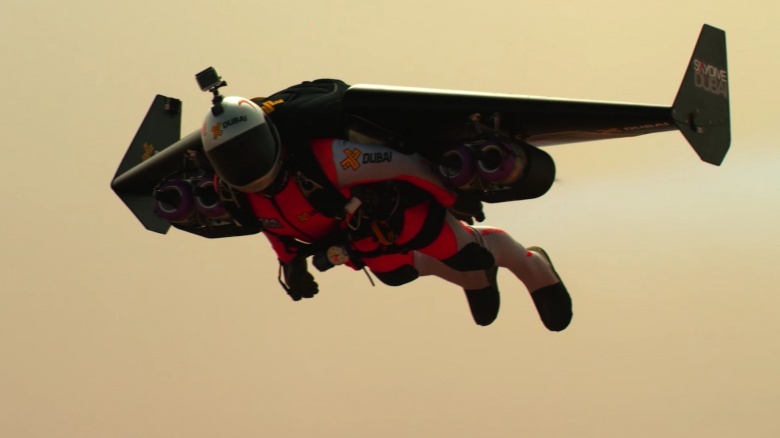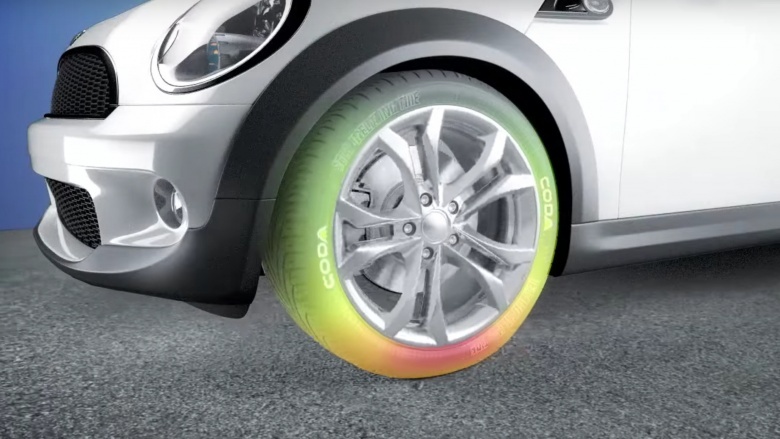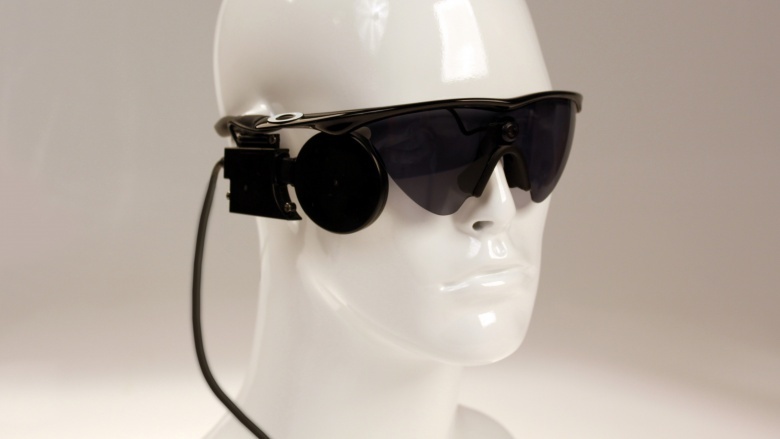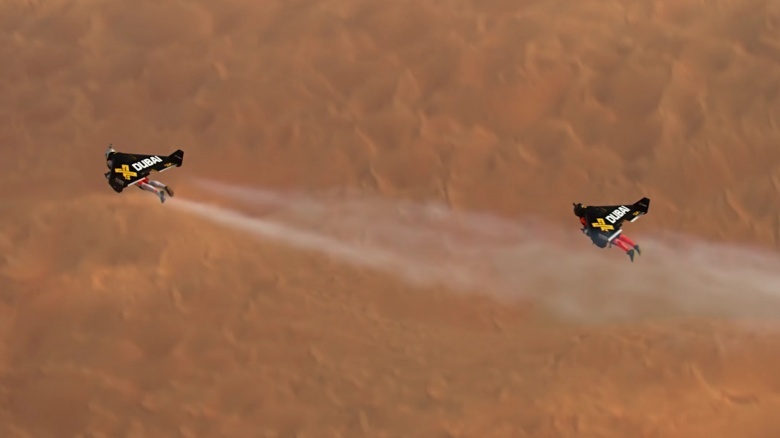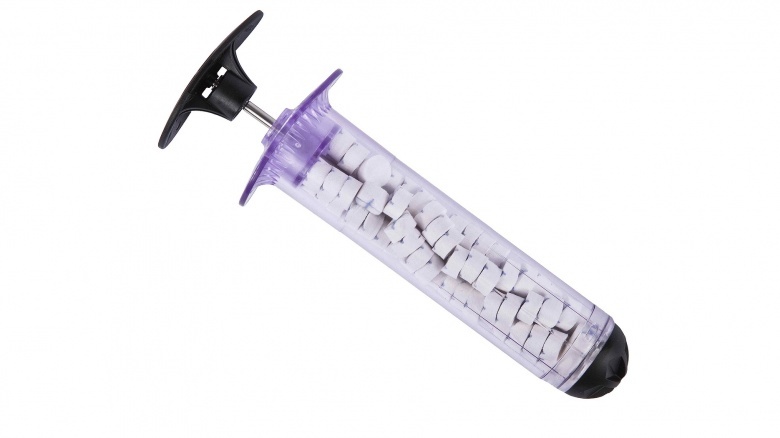New Inventions That Don't Even Seem Possible
We live in miraculous times. No one is really dying from the plague anymore, we can turn the earth beneath our feet into energy for our PlayStations, and you can buy a machine that can build an unregistered gun for you. Hooray? Even though we live in a time of explainable technological miracles, some of these wonders still seem to defy science. Here are a few inventions that don't even seem possible. Prepare your mind for a good, old-fashioned boggling.
Quell
Quell is a small, electronic device that uses a proprietary tech called called OptiTherapy, which uses your own natural neural pulses to help your body fight against chronic pain. If the whole thing sounds like something out of Star Trek, it's because you've probably seen stuff like this in Beverly Crusher's sickbay that did a lot of the same stuff, usually anytime Worf got a splinter from going at it too hard in the Holodeck. Quell's pain-relieving stuff is FDA approved, so it's a far cry from those magnetic bracelets that the gossip magazines try to sell you, and it even pairs with your smartphone, all without dangerous drug interactions.
3Doodler
People have imagined drawing in the air for as long as drawing has existed, and finally, it's kinda possible. Using a thin, plastic filament that is rapidly heated and cooled, the 3Doodler pen allows users to draw anywhere, providing that part of their drawing is anchored on a stable surface, since the laws of gravity still apply, even if the material science seems completely unreal. It's a revolution in rapidly communicating ideas in three dimensions, whereas computerized designs, sculpting, and other forms of building are generally very time-consuming and not always intuitive. If you have a brain that can think in three or four dimensions at once, this seems to be a pretty awesome way to start to bring your ideas to life.
The self-inflating tire
Inflating a tire is a noisy, greasy, unpleasant experience, so it's surprising that the simple physics of the self-inflating tire haven't been implemented universally yet. While the technology has been developed by multiple companies simultaneously, CODA Development seems to possess some of the older patent designs, which uses the action of the tire's natural flattening as it meets the road to force air into a chamber using a peristaltic pump, kinda like the tire is constantly swallowing air. It doesn't seem like this technology is widely used just yet, and it won't save you in the case of a catastrophic blowout, but it might help you survive that nail until you get to the dealership.
No Man's Sky
It's a video game that promises to give players the most open universe that's ever been created, mostly because the game's universe will be created on the fly, partially by the players of the game. The concept behind No Man's Sky is almost esoteric: get to the center of the universe, if you feel like it. If not, just fly around in your spaceship and visit a nearly infinite number of planets, each with unique life forms and resources. The promised scope of this game is so far beyond anything that's ever been created that it's a little daunting and insane, but it's opening up possibilities for open-world video games like never before. The real world sucks anyhow.
The bionic eye
A bionic eye is exactly what it sounds like: an electronic ocular implant that allows people to see when they couldn't see before, strikingly similar to the technology used by Geordi LaForge from Star Trek: The Next Generation. The wearer's improved vision has been likened to a blurry, pixelated Xerox, but a little bit of vision and shape detection is a whole lot better than none at all. And given how complex the relationship is between the eye and the brain, even the faintest signal being repaired through technology is a bit miraculous. It can't be too much longer before certain types of blindness are completely eradicated, thanks to revolutionary advances by Second Sight.
Jetpacks
Believe it or not, there are actually multiple, working jetpacks out there, all using slightly different variations of similar technologies to send their wearers into the sky...and they all look terrifying. You may have seen Yves Rossy's video of him and his pal jumping out of a plane and flying around the Dubai skies with jetpacks that look like miniature jets, or maybe you saw the much smaller JB-9 jetpack, cavorting around the Statue of Liberty from a standing start. No matter which jetpack you've seen in action, it's hard to believe that it's not all just special effects, but these are still far from mass production. And until everyone learns how to use their gosh-darned turn signals, we're just not ready for personal jetpacks anyway.
XStat
While it kind of sucks that we even need the XStat in a modern world full of intelligent people, it's great that we have it. The XStat is a large syringe that contains a bunch of tiny, expanding sponges that can be injected into a bullet wound to maintain a body's hemostatic pressure and stop bleeding, giving the victim more time to reach proper medical care. Even better, each blood sponge can be detected by x-rays, so doctors won't leave any stray bits behind. While the device can't be used for just any puncture wound, it's kind of miraculous that we can now use funky little sponges to save a life.
Fungus styrofoam
Plastic and rubber foams are some of the grossest things we can do to the environment. Sure, they keep your action figures safe despite the rough treatment of your local angry UPS ogre, but ultimately, styrofoams are just poisons waiting to get into your air and drinking water. It seems impossible to replace these common conveniences, but Myco Foam is giving it a shot. No longer just for making little plumbers into big plumbers, mushrooms are being used to replace dozens of non-renewable, destructive, everyday products, from packing peanuts to particle board. A little 'shroom goes a long way.
